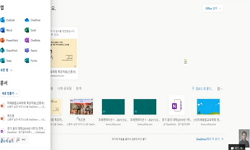This paper proposes noise-robust fast speaker adaptation method based on the eigenvoice framework in various noisy environments. The proposed method is focused on de-noising and environment clustering. Since the de-noised adaptation DB still has resid...
http://chineseinput.net/에서 pinyin(병음)방식으로 중국어를 변환할 수 있습니다.
변환된 중국어를 복사하여 사용하시면 됩니다.
- 中文 을 입력하시려면 zhongwen을 입력하시고 space를누르시면됩니다.
- 北京 을 입력하시려면 beijing을 입력하시고 space를 누르시면 됩니다.


다양한 잡음 환경하에서 환경 군집화를 통한 화자 및 환경 동시 적응 = Simultaneous Speaker and Environment Adaptation by Environment Clustering in Various Noise Environments
한글로보기https://www.riss.kr/link?id=A101069705
-
저자
김영국 (LG전자) ; 송화전 (부산대학교) ; 김형순 (부산대학교) ; Kim, Young-Kuk ; Song, Hwa-Jeon ; Kim, Hyung-Soon
- 발행기관
- 학술지명
- 권호사항
-
발행연도
2009
-
작성언어
Korean
- 주제어
-
등재정보
KCI등재,SCOPUS,ESCI
-
자료형태
학술저널
- 발행기관 URL
-
수록면
566-571(6쪽)
-
KCI 피인용횟수
2
- DOI식별코드
- 제공처
-
0
상세조회 -
0
다운로드
부가정보
다국어 초록 (Multilingual Abstract)
This paper proposes noise-robust fast speaker adaptation method based on the eigenvoice framework in various noisy environments. The proposed method is focused on de-noising and environment clustering. Since the de-noised adaptation DB still has residual noise in itself, environment clustering divides the noisy adaptation data into similar environments by a clustering method using the cepstral mean of non-speech segments as a feature vector. Then each adaptation data in the same cluster is used to build an environment-clustered speaker adapted (SA) model. After selecting multiple environmentally clustered SA models which are similar to test environment, the speaker adaptation based on an appropriate linear combination of clustered SA models is conducted. According to our experiments, we observe that the proposed method provides error rate reduction of $40{\sim}59%$ over baseline with speaker independent model.
국문 초록 (Abstract)
본 논문에서는 eigenvoice 방식에 기반하여 다양한 잡음 환경에 강인한 고속 화자 적응 방법을 제안하였다. 제안된 방법은 잡음 제거 기술과 환경 군집화 방법을 기반으로 한다. 그러나, 잡음 ...
본 논문에서는 eigenvoice 방식에 기반하여 다양한 잡음 환경에 강인한 고속 화자 적응 방법을 제안하였다. 제안된 방법은 잡음 제거 기술과 환경 군집화 방법을 기반으로 한다. 그러나, 잡음 제거 기술을 통해 잡음을 제거한 후에도 여전히 잔여 잡음이 존재하므로 비음성 구간의 켑스트럼 평균을 사용하여 잡음 환경별로 화자 적응 데이터를 분류한 후 각각의 환경별로 환경 모델을 구성한다. 이러한 환경 군집화를 적응데이터에 대해 구성한 후 테스트 음성이 입력되면 군집화된 모델 중에서 인식 데이터와 가장 유사한 복수의 환경별 군집화된 화자 적응 모델을 구한 후 이들의 가중함을 통해 화자 적응을 수행하는 방법이다. 제안된 방법은 적응 및 평가를 통해 화자 독립 모델을 사용한 경우에 비해 $40{\sim}59%$ 인식 오류 감소율을 얻었다.
참고문헌 (Reference)
1 H. J. Song, "Simultaneous estimation of weights of eigenvoices and bias compensation vector for rapid speaker adaptation" 2945-2948, 2004
2 C. J. Leggetter, "Maximum likelihood linear regression for speaker adaptation of continuous density hidden Markov models" 9 (9): 171-185, 1995
3 "ITU recommendation P.56, Objective measurement of active speech level"
4 R. Kuhn, "Eigenvoices for speaker adaptation" 1771-1774, 1998
5 H. J. Song, "Eigen-environment based noise compensation method for robust speech recognition" 981-984, 2005
6 C. H. Lee, "A study on speaker adaptation of the parameters of continuous density hidden Markov models" 39 (39): 806-814, 1991
1 H. J. Song, "Simultaneous estimation of weights of eigenvoices and bias compensation vector for rapid speaker adaptation" 2945-2948, 2004
2 C. J. Leggetter, "Maximum likelihood linear regression for speaker adaptation of continuous density hidden Markov models" 9 (9): 171-185, 1995
3 "ITU recommendation P.56, Objective measurement of active speech level"
4 R. Kuhn, "Eigenvoices for speaker adaptation" 1771-1774, 1998
5 H. J. Song, "Eigen-environment based noise compensation method for robust speech recognition" 981-984, 2005
6 C. H. Lee, "A study on speaker adaptation of the parameters of continuous density hidden Markov models" 39 (39): 806-814, 1991
동일학술지(권/호) 다른 논문
-
골다공증 여성에서 요추골 밑 대퇴골 부위의 골밀도와 종골 음속 사이의 상관관계
- 한국음향학회
- 이강일
- 2009
- KCI등재,SCOPUS,ESCI
-
반향 환경에서의 스피커 어레이를 이용한 소리 집중 기술
- 한국음향학회
- 백순호
- 2009
- KCI등재,SCOPUS,ESCI
-
개선된 머리전달함수를 이용한 3차원 입체음향 성능 개선 연구
- 한국음향학회
- 구교식
- 2009
- KCI등재,SCOPUS,ESCI
-
대용량 복수후보 TTS 방식에서 합성용 DB의 감량 방법
- 한국음향학회
- 이정철
- 2009
- KCI등재,SCOPUS,ESCI
분석정보
인용정보 인용지수 설명보기
학술지 이력
| 연월일 | 이력구분 | 이력상세 | 등재구분 |
|---|---|---|---|
| 2026 | 평가예정 | 재인증평가 신청대상 (재인증) | |
| 2020-01-01 | 평가 | 등재학술지 유지 (재인증) |  |
| 2017-01-01 | 평가 | 등재학술지 유지 (계속평가) |  |
| 2013-01-01 | 평가 | 등재학술지 유지 (등재유지) |  |
| 2010-01-01 | 평가 | 등재학술지 유지 (등재유지) |  |
| 2008-01-01 | 평가 | 등재학술지 유지 (등재유지) |  |
| 2006-01-01 | 평가 | 등재학술지 유지 (등재유지) |  |
| 2004-01-01 | 평가 | 등재학술지 유지 (등재유지) |  |
| 2001-07-01 | 평가 | 등재학술지 선정 (등재후보2차) |  |
| 1999-01-01 | 평가 | 등재후보학술지 선정 (신규평가) |  |
학술지 인용정보
| 기준연도 | WOS-KCI 통합IF(2년) | KCIF(2년) | KCIF(3년) |
|---|---|---|---|
| 2016 | 0.23 | 0.23 | 0.22 |
| KCIF(4년) | KCIF(5년) | 중심성지수(3년) | 즉시성지수 |
| 0.2 | 0.18 | 0.398 | 0.07 |




 ScienceON
ScienceON




